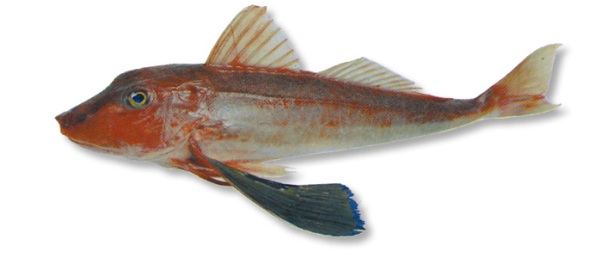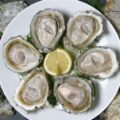Red gurnard (Chelidonichthys kumu), like most of the worldwide gurnard family, are shallow-water, bottom-dwelling fish. They are found all around New Zealand (except for the southern fiords) on sandy seafloors to a depth of about 180 metres and feed mostly on crabs, shrimps and worms. Red gurnard is available year-round. While there are several other varieties of gurnard, red is the most prevalent and what you buy as “gurnard” is most likely to be red gurnard.
The red gurnard is easily identifiable due to its striking orange body with two large bluey green coloured pectoral fins.
Red gurnard grow up to around 2kg in weight.
Red gurnard is a firm fleshed fish, the fillets hold together well once it is cooked.
With its firm flesh and low oil content gurnard can dry out when frying so it is best to make sure that you don’t overcook it.
Gurnard is great for frying, poaching, curries, soups or stews and the bones are good for stock.
Red gurnard are found around the world and mostly the names are logical, Australia are the same as us, Grondin rouge in France and Grondin rouget in Canada although Houbou in Japan may take some working out.
Some recipes on foodlovers suited to gurnard include;
Pan fried fish with Asian Flavours
Pan Fried Fish with Capsicum and Ginger
Sustainability: Red gurnard annual catch has remained relatively stable for over a decade, ranging between 3,250 and 4,000 tonnes. Total allowable catch has similarly remained consistent at just over 5,000 tonnes. Red gurnard are often caught alongside other species, such as snapper and flatfish. North Island gurnard stocks have been relatively stable over the last decade, fluctuating around target levels. Recent increases in abundance are apparent for most South Island stocks. The total allowable commercial catch in the 2012/13 fishing year was 3,804 tonnes, of which 70% was caught (5,457 tonnes).
Dietary information: Red gurnard is a good a source of selenium, niacin (vitamin B3) vitamin B12 and vitamin D, and is a source of iodine, phosphorus and potassium.
Do you cook with gurnard and if so what are your favourite recipes?






